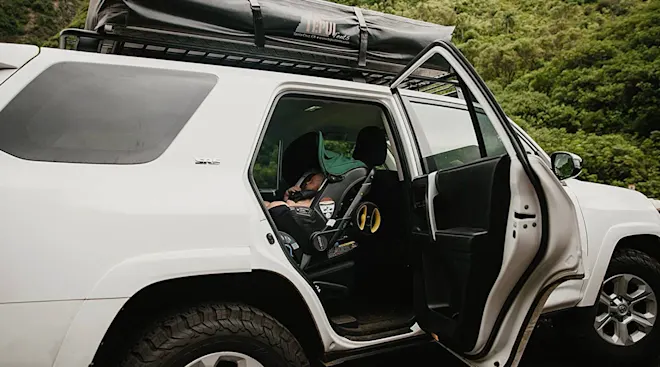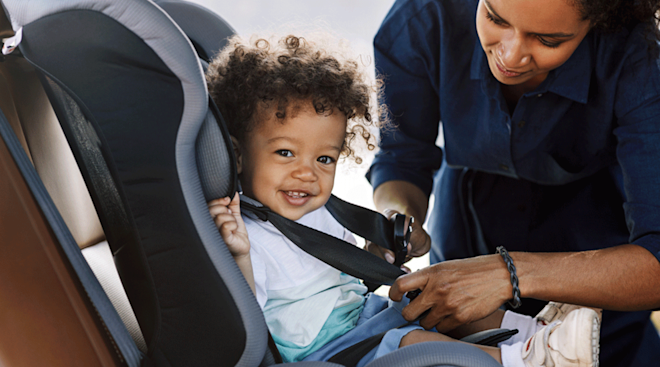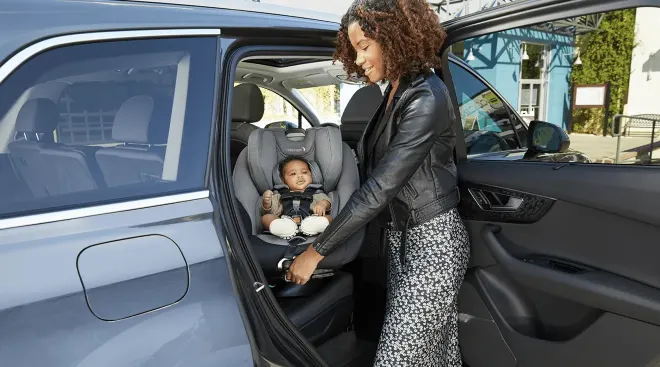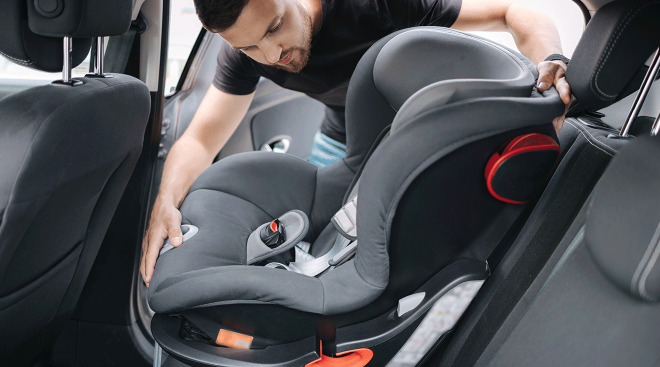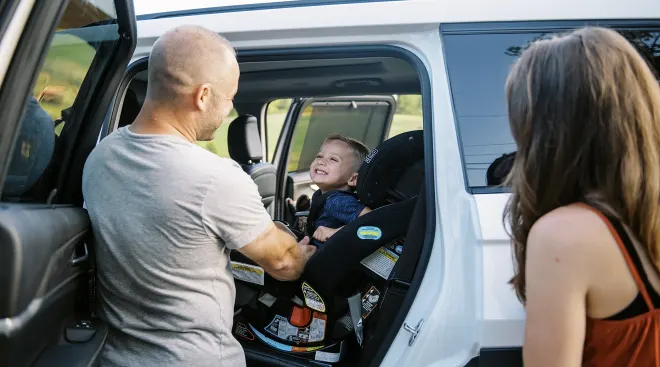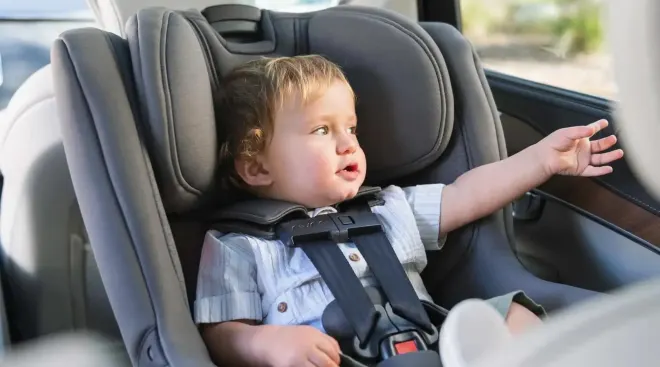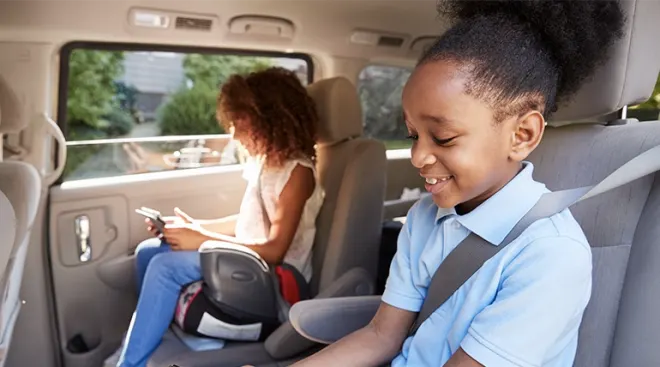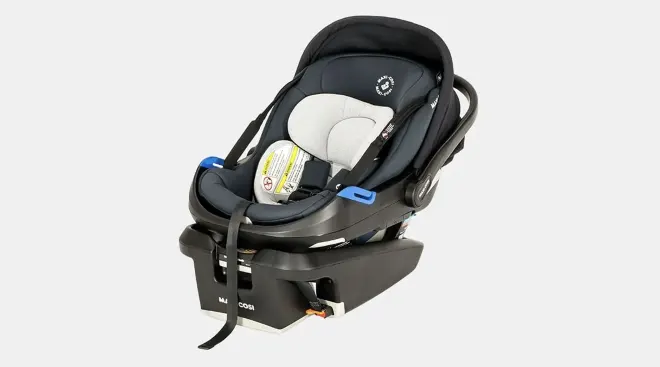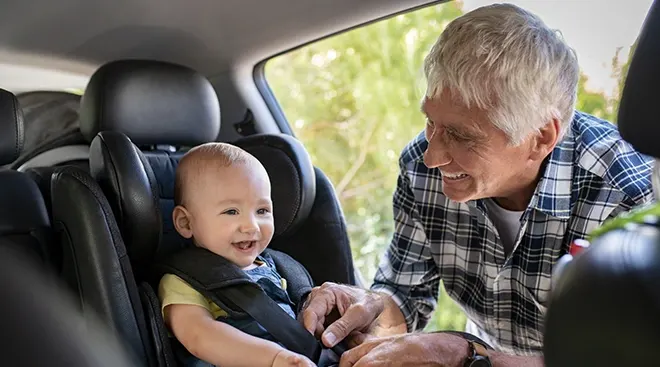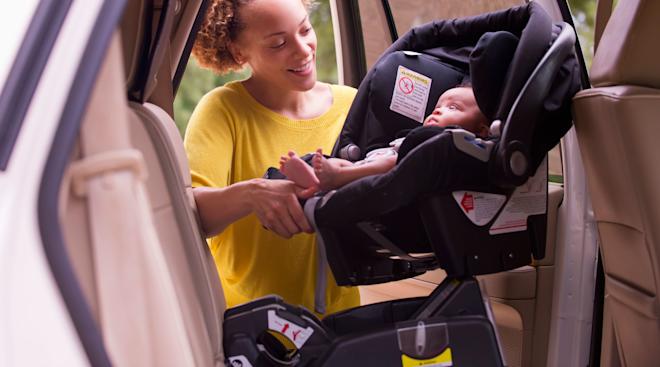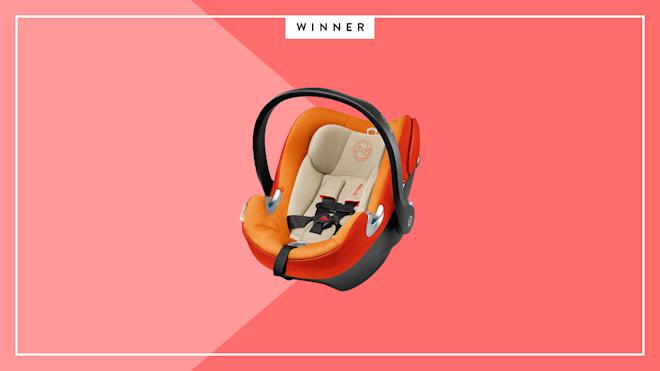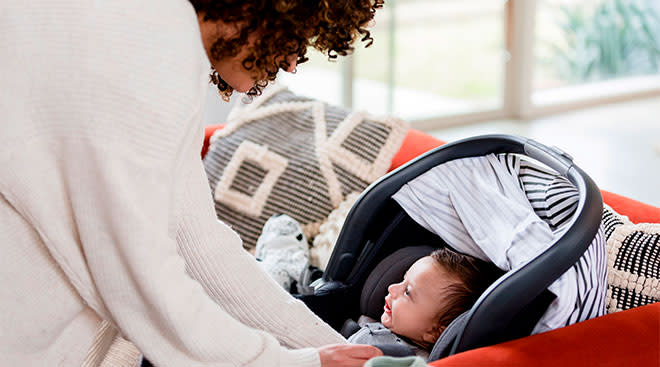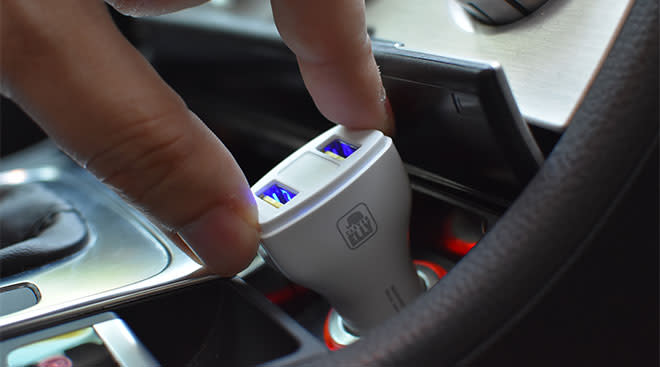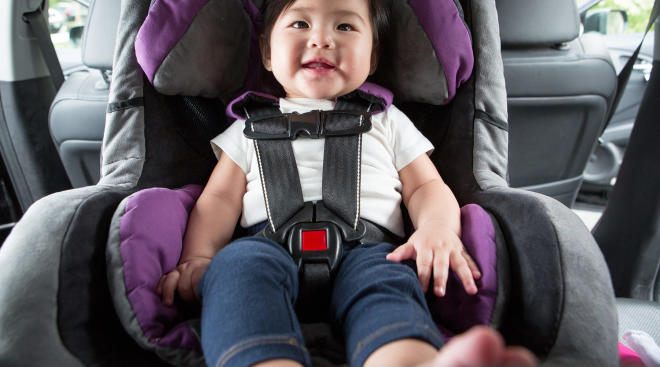When to Switch From an Infant Car Seat to a Convertible Car Seat
You know baby needs a car seat to safely travel around by car. But with all the different types of car seats out there and varying recommendations, it can all feel quite daunting for new parents. Of course, you want to ensure baby’s safety—so how can you know when baby is too big for their infant car seat (the one they generally go home from the hospital in?) And when is it time to transition to the next step (a convertible car seat)? Oh, and while we’re asking questions: What’s the difference between the two? Read on as experts answer all your burning questions about when to switch from an infant car seat to a convertible one with confidence and clarity.
Before we get into when to transition from an infant car seat to a convertible one, let’s understand the key distinctions between the two. The biggest difference is that infant car seats are only rear-facing, explains Josh Dilts, CPST, a child passenger safety technician with Chicco. They have two parts, a removable carrier and a base that stays in the car. “These seats are easily portable, meaning the car seat can go to and from the car, clicking directly into a stroller, without unbuckling or disturbing baby,” he says.
On the other hand, convertible car seats are “all-in-one,” says Denise Scott, MD, an Oklahoma-based pediatrician. These car seats sit a bit more upright and help you transition your growing child from rear-facing to forward-facing (once they’re big enough). In fact, some new-model convertible car seats also rotate, meaning they can be safely positioned for use in either direction. However, unlike infant car seats, convertible car seats don’t click in and out of the base, meaning they’re not portable—rather, they stay fixed in the car. Moreover, some convertible car seats may also be transitioned to a seatbelt position and used as a booster seat once your child’s ready, Scott adds.
Wondering how to tell when baby is too big for their infant car seat? Ultimately, this will depend on your car seat’s specific weight and height limitations. “The majority of children outgrow their infant car seat in height before weight,” Dilts explains. Essentially, this means that if your child’s head is close to an inch away from the top of the head rest’s shell (when in the top position), it’s time to transition to the next car seat. Another sign to look for? If baby seems generally cramped, it’s time to switch car seats. “Once baby reaches either of those [height or weight] milestones—typically, within one to two years for infant or newborn car seats—it may be time to consider purchasing a convertible car seat,” Dilts says.
If you’re still questioning whether it’s time to switch car seats, Scott suggests asking the following questions:
- Has baby outgrown the weight limit? Height limit?
- Is there less than one inch of clearance between baby’s head and the top of the car seat?
- Do baby’s feet extend beyond the front edge of the car seat? Are their knees bent when rear-facing?
- Do baby’s shoulders extend above the upper shoulder harness opening?
If the answers to the above questions are yes, then it’s time to upgrade your little one to a convertible car seat. Keep in mind, though, that they’ll still be rear-facing for safety (more on this below).
Is there an infant car seat age limit?
The U.S. Department of Transportation notes that babies should be rear-facing from birth to at least a year old. According to Dilts, most babies and toddlers will outgrow their infant car seat by the time they’re 9 to 18 months old. But, while these ages are good markers to know, most infant car seat manufacturers go by size (i.e. height and weight limits) rather than age. This is because all babies will grow at their own pace and vary in height and weight, even at the same age. “The majority of car seat models are unique, so be sure to check the manufacturer’s recommendations for usage instructions,” Dilts says. “And keep in mind that car seat laws vary from state to state, so be sure to stay informed on the most up-to-date requirements for your state.”
How long do you use an infant car seat?
The height and weight limits for an infant car seat can vary. “Most infant car seats are usually designed for babies ranging from 4 to 35 pounds and up to 32 inches,” Dilts says. But, again, you’ll want to check with your specific manufacturer and manual for proper usage limits, as each infant car seat is different. While some may be suitable for babies up to 22 pounds, others may go as high as 35 pounds, Scott says.
Both experts again stress the importance of reading the manual to ensure you’re using the new convertible car seat and its features correctly. Scott reminds caregivers that the middle of the back seat is the safest place for any car seat, and you’ll want to make sure the new convertible car seat is still rear-facing. Beyond that, choose a convertible car seat that’ll be easiest to use correctly on a daily basis.
Plus, use all the resources at your disposal to help ensure the car seat is installed correctly and compatible with your car. Along with reading the manual, look up the Safe Kids Coalition or the National Child Passenger Safety Certification in your local areas. “Your local children’s hospital, highway safety office or state department of health may also have these services,” Scott says.
All the experts agree that babies and toddlers should be rear-facing in a car seat for as long as possible, and at least until they’re 2 years old. “Rear-facing infant car seats offer the best support for babies’ heads, necks and spinal cords in the event of a car accident,” says Rallie McAllister, MD, MPH, family physician and co-author of The Mommy MD Guide to Your Baby’s First Year. “Hands down, they’re the safest way for babies to travel in a car.” Dilts agrees, noting that—in the event of an accident—this positioning helps to distribute “the force of impact across the entire seat and limits head and neck movement.” This is especially important for babies, as their heads tend to be bigger than their bodies, and their neck and spines are still developing.
While “as long as possible” may seem like a vague answer to how long kids need to be rear-facing, it’s the right answer since all kids grow at their own pace. Convertible car seats are meant to be used for kids up to 65 pounds, but exactly when each kiddo will hit that limit will vary.
Wondering when to switch to a forward-facing car seat—or when to turn your convertible seat around? In short, you’ll want to do this when baby outgrows the height and weight limits for their convertible car seat to be rear-facing. Again, this will depend on the individual car seat, and it likely won’t happen until after your child’s second birthday. (Anecdotally, Scott notes that some countries actually keep kids rear-facing up to 4 years old due to safety.)
It can be tough figuring out when baby will grow too big for their car seat and need an upgrade. But remember you have resources to help you, and don’t hesitate to bring up any concerns with your pediatrician.
Please note: The Bump and the materials and information it contains are not intended to, and do not constitute, medical or other health advice or diagnosis and should not be used as such. You should always consult with a qualified physician or health professional about your specific circumstances.
Plus, more from The Bump:
Josh Dilts, CPST, is an advocate for child passenger safety and a certified child safety technician with Chicco. He earned his bachelor’s degree from the University of Delaware.
Rallie McAllister, MD, MPH, is a family physician based in Kentucky with over two decades of experience. She is also the coauthor of The Mommy MD Guide to Your Baby’s First Year and The Mommy MD Guide to the Toddler Years and has been featured as a medical expert on over 100 radio shows, TV shows and publications. She received her medical degree from East Tennessee State University’s Quillen College of Medicine.
Denise Scott, MD, is a pediatrician with JustAnswer and a pediatric endocrinologist based in Oklahoma with over 30 years of experience. Certified in culinary medicine, Scott also runs the blog Feed Future Health and is the author of Feed Your Child's Future Health: Prevent Disease Before it Starts. She received her medical degree from the University of Texas Medical Branch and completed her residency at the University of Oklahoma Health Sciences Center with a fellowship at the National Institutes of Health.
United States Department of Transportation, Car Seats and Booster Seats
Healthy Children (American Academy of Pediatrics), Car Seats: Information for Families, February 2024
Learn how we ensure the accuracy of our content through our editorial and medical review process.
Navigate forward to interact with the calendar and select a date. Press the question mark key to get the keyboard shortcuts for changing dates.



































